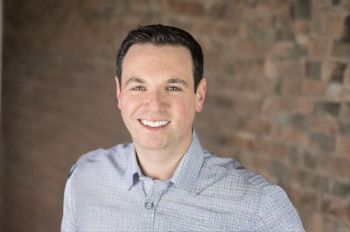What's Next? How Research at IIT Will Shape the Future
2005 marks another year in which Illinois Institute of Technology (IIT) has been at the forefront of research and innovation. Topics included among this year’s many research highlights are sustainable energy, medical imaging, islet cell encapsulation, muscle structure and wireless interference.
"All of the ongoing research at IIT fulfills our mission to create and disseminate knowledge and technologies that address national and global needs and priorities," said Ali Cinar, IIT’s Vice Provost for Research and Dean of the Graduate College."
Sustainable Energy
Sustainable energy research at IIT in 2005 included the work of Ali Emadi, Professor of Electrical and Computer Engineering with hybrid electric vehicles. Emadi’s Consortium on Advanced Automotive Systems is working to improve fuel economy and performance while reducing emissions.
Said Al-Hallaj, Research Associate Professor of Chemical and Environmental Engineering, is focused on the production of clean fuel technologies. With his "Sustainable Village" project he hopes to create facilities which will operate on clean energy, using renewable and environmentally-friendly technology sources such as wind, water and hydrogen.
Both Emadi and Al-Hallaj have created start up companies to bring their research to the marketplace. Al-Hallaj’s research is being conducted in the business Incubator housed in the new University Technology Park at IIT.
Medical Imaging
Medical imaging is one of IIT’s most successful interdisciplinary research activities, bringing together researchers from the Biomedical Engineering Department, Electrical and Computer Engineering Department, and Biological, Chemical and Physical Sciences Departments. Miles Wernick, IIT Professor, is fostering these efforts as Director of this research. Wernick’s group has developed a new imaging method called multiple-image radiography (MIR), which promises to replace conventional mammography. MIR produces more detailed images, and may eliminate the need for painful breast compression during imaging. IIT is currently forming a company to commercialize MIR and related techniques.
Islet Cell Encapsulation
Research conducted by Victor Perez-Luna and Fouad Teymour from IIT’s Department of Chemical and Environmental Engineering is focused on islet cell encapsulation. The successful development of a bioartificial pancreas through islet cell encapsulation offers a potential cure for Type 1 diabetes. These techniques can expand islet supply and reduce the need for anti-rejection drugs for transplant patients. Perez-Luna is an Assistant Professor of Chemical Engineering and Teymour is Johnson Polymer Professor and Chairman, Department of Chemical and Environmental Engineering.
Muscle Structure
IIT Professor of Biology Tom Irving believes that watching fruit flies in motion could hold the key to understanding the way human heart muscles perform. Studying how the fly’s muscles lengthen and shorten to drive the wings helps to understand how the insects generate enough power to sustain flight. The many similarities between insect muscle and the human cardiac muscle suggest that the flies may serve as useful models for studying human heart disease.
Wireless Interference
Dennis Roberson, IIT’s Vice Provost for New Initiatives and former Chief Technology Officer of Motorola, is leading a research team to study wireless interference. Invisible wires are being crossed in the electromagnetic spectrum as common devices such as microwave ovens, cordless phones, baby monitors, and Bluetooth-enabled wireless mouse, keyboards, and cell phone earpieces interfere with one another and with other transmissions. And with the air waves getting more and more crowded, Roberson’s team is working to discover exactly how all this traffic impacts wireless networks—and more important, how to mitigate the interference before major collisions bring the wireless networks to a halt.
Founded in 1890, IIT is a Ph.D.-granting technological university awarding degrees in the sciences, mathematics and engineering, as well as architecture, psychology, design, business and law. IIT’s interprofessional, technology-focused curriculum prepares the university’s 6,200 students for leadership roles in an increasingly complex and culturally diverse global workplace.




